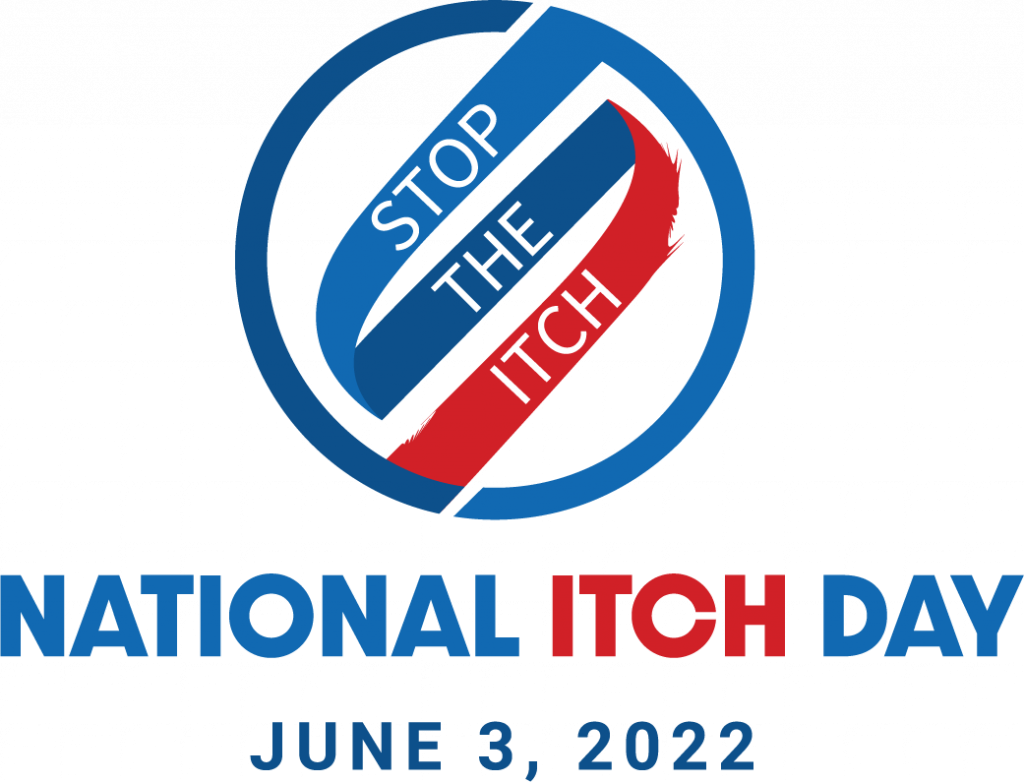National Itch Day is June 3 - Let’s “Stop the Itch”!
Many dialysis patients experience severe itching. This condition is called Chronic Kidney Disease Associated Pruritis (CKD-aP).
AAKP Ambassador Jonathan Traylor has a family history of diabetes and hypertension (high blood pressure). He was diagnosed with diabetes and hypertension as a young father in his early thirties. He remembers receiving diabetes and hypertension pamphlets to read from his doctor after the diagnosis but says there was no discussion about managing his conditions or that they could cause chronic kidney disease (CKD).
Jonathan says now, “I was a statistic for CKD; I had the top two leading causes of kidney disease, but I did not even know what kidney disease or dialysis was until it happened to me a few years later.”

Jonathan did start to take the prescribed medications for his diabetes and hypertension, but he did not make any other lifestyle changes such as diet or exercise. “I was one of those guys that did what I wanted, ate what I wanted…I was always strong and able to do things, but I was lacking accountability and lacking an exercise regimen.”
In addition, as a husband and a father of two children, finances were often tight, and he could not always afford medical care. He did not have a consistent job that included health insurance, and sometimes he had to choose between paying a utility bill and putting food on the table or affording a doctor’s visit and medications. He shares that his blood sugar level was regularly very high, in the 300’s or 400’s and his blood pressure also continued to be elevated.
In July 2019, Jonathan became very sick. He was extremely fatigued and weak. He thought he had the flu. His wife, Melissa, tried to keep him hydrated with sports beverages, but he got more ill and eventually went to the emergency room (ER). At the ER, Jonathan learned that it was not the flu. In fact, the unmanaged diabetes and high blood pressure had caused damage to his kidneys, and he was now in end stage kidney disease (ESKD). Additionally, his blood potassium level was at a staggering 9 (normal range is less than 5.1), signaling hyperkalemia.
Jonathan had to begin dialysis immediately to remove the toxins and fluid that had built up due to his failing kidneys. He says he received an IJ (internal jugular) catheter in his neck and chest to begin dialysis.
While in the hospital, Jonathan was dealing with a lot. He says he was a “very sick man and lucky to survive”. In addition to everything happening, he remembers also starting to experience severe itching that turned into welts on his stomach area and eventually spread to his arms and back. He felt like the toxins were coming out of his body and he had a lot of side effects. He scratched so much in an attempt to satisfying this ‘itch’, that he broke the skin and these areas would bleed and scab; but his doctors did little to identify the itch or try to manage it.
After a few weeks, Jonathan was released from the hospital with a perma-cath (catheter placed through a vein into or near your right atrium) for his dialysis treatments. He started in-center hemodialysis after his hospital stay and eventually, he had surgery to get a fistula placed for his permanent dialysis access, as catheters are often prone to infections.
As dialysis continued, so did the itching. The welts were most noticeable on his arms and his back. He felt the incessant itching was now just another part of dealing with his chronic illness. Jonathan has experienced a lot of side effects from his kidney disease, and it taught him how to be mindful of what was happening to his body and how to live well on dialysis. He started studying his dialysis machine and his treatments. He asked lots of questions and eventually trained to do home hemodialysis. With home hemodialysis, Jonathan says that many things were better, including the itching. “Everything was better with home hemodialysis. I was getting treatment everyday instead of three days a week. With in-center I would have 3-5 kilos of fluid built up, but when I did home dialysis the most I ever had was 1 kilo of fluid. I felt great physically and mentally better too as I had more control over my care. I also experienced much less side effects.”
Jonathan had been on home hemodialysis for about three months when he received a call from an old church friend in Louisville, Kentucky. His friend’s brother was passing away, and the family wanted Jonathan to have one of his kidneys. Jonathan says, it was very unexpected, and it was bittersweet since he knew the family very well. He immediately was grateful for their thoughtfulness in their time of loss. He consulted with a few very close mentors and friends and ultimately accepted the kidney donation. “I totally believe it was divine, sent from God. The family was so gracious to reach out to me.” The kidney was miraculously a perfect match. It was flown to Jonathan’s transplant center and on August 11, 2020, Jonathan underwent kidney transplant surgery.
Life post-transplant is good for Jonathan. He says that he feels great and any side effects, like the itching that he felt while on dialysis, are now completely gone. He also takes great care of his body these days. He has an exercise routine and eats a kidney-friendly diet. His diabetes control is the best it’s ever been. Jonathan celebrates that he no longer takes any hypertension medication. He contributes that to consistent exercise, stating that exercise was a major missing piece that was missing in his life, not only for his physical health but also his mental health.
Jonathan is a passionate kidney advocate and shares his story to help others with their own kidney journey. Along with being an active AAKP Ambassador for the state of Texas, he also has a kidney podcast called, Hope with Jonathan (https://www.hopewithjonathan.com) to and is active on social media.

Although not formally diagnosed with chronic kidney disease associated pruritis (CKD-aP), this is likely what Jonathan experienced while on dialysis.
CKD-aP is defined as moderate to severe itching that is directly related to kidney disease, without the presence of any other comorbid condition such as liver or skin that includes itching. It is often a distressing and overlooked condition found primarily in individuals with end-stage kidney disease (ESKD), such as those on hemodialysis. It is believed to affect approximately 30-70% of kidneys patients and has been associated with poor quality of life, poor sleep, and depression. It is often described by dialysis patients as “an itch you just can’t get to.”
It has also been associated with increased hospitalizations and/or mortality in hemodialysis patients due to the increased risk of inflammation and infections due to an individual’s continual scratching of the skin in an attempt to satisfy the ‘itch’ which can lead to lesions or broken/damaged skin.
CKD-aP can be difficult to diagnose because its severity may vary over time from mild to moderate to severe and the itch may occur randomly or frequently. CKD-aP may also occur anytime in relation to dialysis – before, during, or after as well as impact various parts of a kidney patient’s body (face, back, or arm for example). Further complicating the diagnosis of CKD-aP is that fact that no visual presentation on the skin may occur.
Due to all these factors, best practice is for physicians to consider any itching in dialysis patients as being related to CKD-aP unless there is a clear alternative explanation.

Stop the Itch!
The Stop the Itch campaign is supported by an educational donation by Vifor Pharma, Inc.
Learn more at: http://www.bit.ly/StopTheItch






























